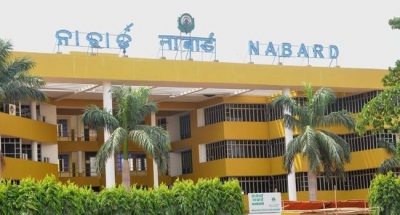Domesticated Yak cattle can be found all over the Himalayan Region — Sikkim and northern West Bengal; Uttarakhand and Himachal Pradesh in India.
Wild Yak can also be found in Tibet.
Despite the challenges of climate change and unfriendly habitats, as well as the loss of livelihood, Yak farmers living in Arunachal Pradesh’s high mountains now have a reason for celebration thanks to a new initiative by the ICAR National Research Centre on Yak and a favorable response from the National Bank for Agriculture and Rural Development.
Banks responded positively to the Indian Council of Agricultural Research’s (ICAR) proposal and offered loans.This was to help Yak farmers, as well as other people who are interested in a sustainable livelihood from the bovine breed.
Mihir Sarkar, director of ICAR-National Research Centre on Yak in Arunachal Pradesh stated that credit proposals and associated plans were approved by NABARD and are therefore feasible for banks to support credit.They have been added in the Potential Linked Credit Plans.
He believed that the financial support would encourage Yak husbandry, and provide economic benefits for Yakherders.
Sarkar stated that Yak farmers are eligible for loans to finance their Yak farming and treatment.
The new scheme allows Yak farmers to obtain loans up to Rs 5.65 million with very low interest rates and subsidy for a time.
According to the ICAR scientist, they will soon convene a meeting with Yak farmers, bank executives and other interested parties in order to talk through the details of the scheme prior its execution.
Sarkar said that steps would be taken in Ladakh to implement the scheme, wherein a centre for Yak research has been authorized by government,” Sarkar spoke over telephone with IANS.
The ICAR National Research Centre on Yak was a crucial part of the National Insurance Company Ltd’s insurance program for the jumbo animals.They recently decided to cover the high-value Himalayan cattle.
Sarkar, citing the most recent data, stated that India is home to approximately 58,000 Yaks.These Yaks are found at the Himalayan heights.
Arunachal Pradesh is home to the most Yaks, with around 24,000 Yaks residing in Tawang and West Kameng.This population is followed by approximately 26,000 Yaks in Jammu and Kashmir and Sikkim and 2,000 Himachal Pradesh, and about 1,000 Yaks in Uttarakhand and northern West Bengal.
Yak is a lifeline for pastoral nomads in the higher reaches of the Himalayas where other bovines would not survive or at least not without difficulty.
Yaks play a multidimensional socio-cultural economic role for the pastoral nomadic communities who rear Yaks for earning their livelihood.
However, lately, the economic dividends arising from Yak farming are declining and this is further reflected in the dwindling Yak population on a year-by-year basis.
Sarkar said that although factors such as transhipment of Yak farmers during the summer and winter season, inbreeding, cross-hybridization and unscientific farming practices precipitated the worsening trend, disillusionment of the younger generation due to the hardships of Yak rearing stands out as one of the prime reasons for mass desertions from the occupation and the consequent declining population of the animal.
Yak-rearing also becomes more difficult as families are settling down in other farming, as traders and daily wage labourers, and as part of the formal monetised economy.
Animal expert Apurba Kumar Dey said that in the recent years the summer has extended and the temperature has risen.
“Yaks usually live in temperatures below 10-15 degree celsius and can’t tolerate rising temperatures.Familiar to very cold temperatures, the Yak is able to survive up to minus 40 degree celsius but finds it difficult when the mercury crosses 13 degree celsius,” Dey told IANS.
The wild ‘pure breed’ Yak population, estimated at no more than 10,000 to 15,000, is now in the Tibetan Autonomous Region, where border control is strict and free-crossing of Yaks and their herders from the outside has been restricted.
(Sujit Chakraborty can be contacted at [email protected])
sc/bg
#source #factors #Arunachal Pradesh #Itanagar #Himachal Pradesh #Jammu And Kashmir #Jammu #Ladakh #Sikkim #Uttarakhand
.






